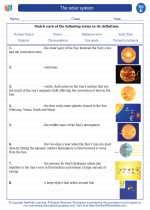Circular Motion Study Guide
Circular motion is the movement of an object in a circular path around a fixed point. This type of motion involves both linear and angular components, and is governed by principles of physics such as centripetal force and acceleration. Here are some key points to understand about circular motion:
Key Concepts
- Circular Path: An object moving in a circular path experiences a constant change in direction, even if its speed remains constant.
- Centripetal Force: This is the force that keeps an object moving in a circular path, directed toward the center of the circle.
- Centripetal Acceleration: The acceleration of an object in circular motion, always directed toward the center of the circle.
- Angular Velocity: The rate of change of angular displacement of an object with respect to time.
- Period and Frequency: The period of circular motion is the time it takes for an object to complete one full revolution, while the frequency is the number of revolutions per unit time.
Examples of Circular Motion
Some common examples of circular motion include the motion of a carousel, the orbit of planets around the sun, and the motion of a tetherball as it revolves around a pole.
Understanding Centripetal Force
Centripetal force is essential to maintaining circular motion. It is not a new form of force, but rather the net force acting on an object that keeps it moving in a circle. This force is provided by tension, friction, gravity, or any other force directed toward the center of the circle.
Practicing Problems
When studying circular motion, it's important to work through problems that involve calculating centripetal force, acceleration, and other related quantities. Practice using formulas such as:
Centripetal Force: F = (mv^2) / r
Centripetal Acceleration: a = v^2 / r
Angular Velocity: ω = θ / t
Remember to pay attention to units and make sure they are consistent when plugging values into these formulas.
Real-World Applications
Understanding circular motion is crucial in many fields, including engineering, physics, and astronomy. It is also relevant in everyday situations, such as driving around a curve or designing amusement park rides.
By mastering the principles of circular motion, you'll gain a deeper understanding of how objects move in circular paths and the forces that govern their motion.
Good luck with your studies!
.◂Science Worksheets and Study Guides Fifth Grade. The solar system

 Worksheet/Answer key
Worksheet/Answer key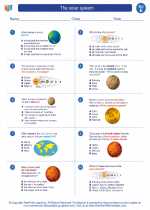
 Worksheet/Answer key
Worksheet/Answer key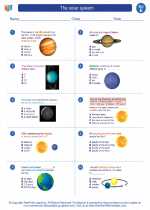
 Worksheet/Answer key
Worksheet/Answer key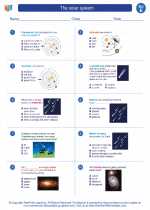
 Vocabulary/Answer key
Vocabulary/Answer key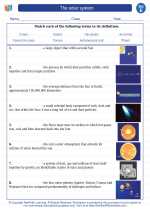
 Vocabulary/Answer key
Vocabulary/Answer key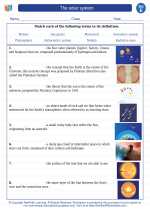
 Vocabulary/Answer key
Vocabulary/Answer key